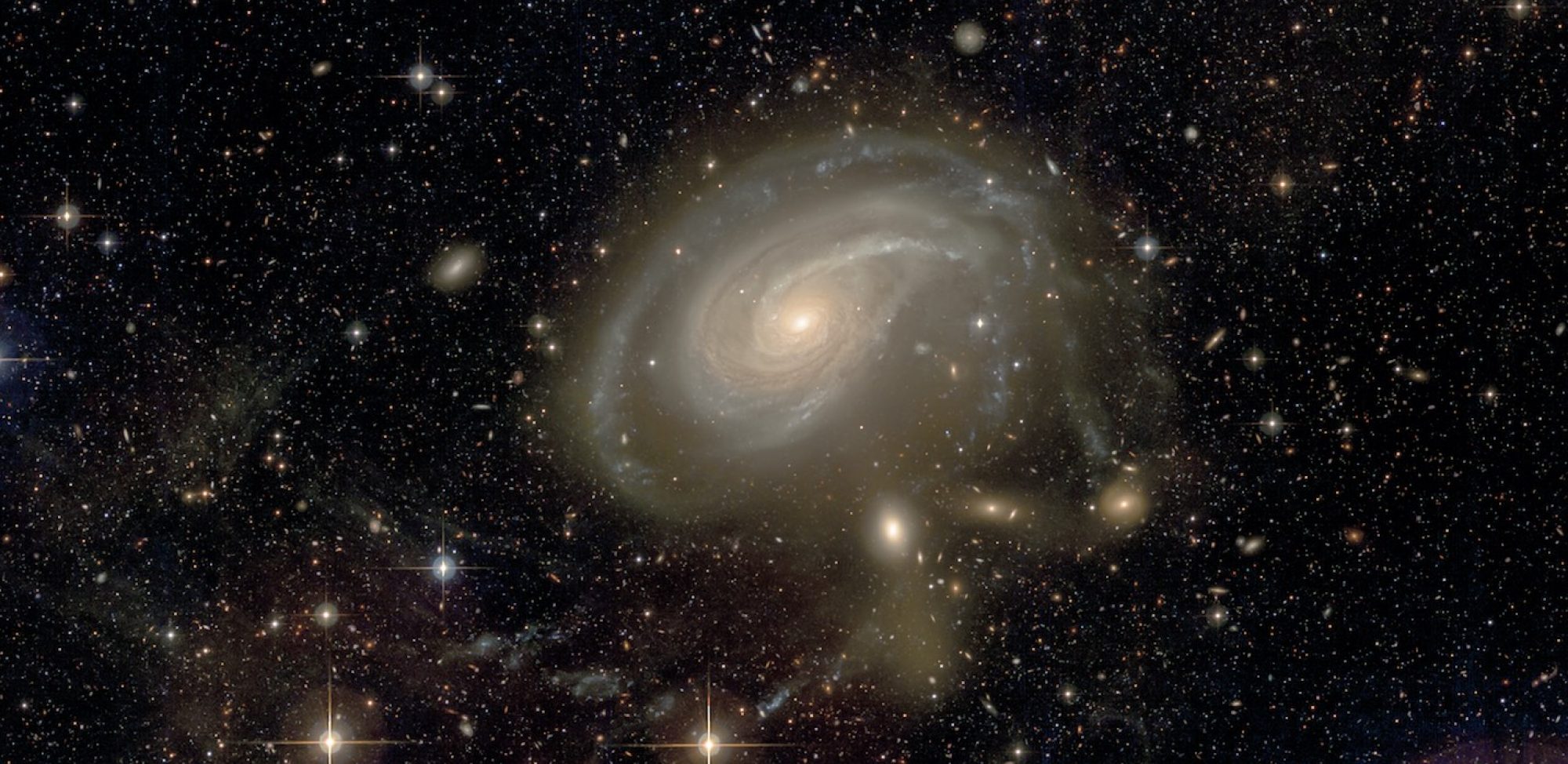Ultra-Diffuse galaxies in the MATLAS low-to-moderate density fields

Recent advances in deep dedicated imaging surveys over the past decade have uncovered a surprisingly large number of extremely faint low surface brightness galaxies with large physical sizes called ultra diffuse galaxies (UDGs) in clusters and, more recently, in lower density environments. As part of the MATLAS survey, a deep imaging large program at the Canada-France-Hawaii Telescope (CFHT), our team has identified 2210 dwarf galaxies, 59 (~3%) of which qualify as UDGs. Averaging over the survey area, we find ~0.4 UDG per square degree. They are found in a range of low to moderate density environments, although 61% of the sample fall within the virial radii of groups.
Continue reading “Ultra-Diffuse galaxies in the MATLAS low-to-moderate density fields”Dwarf galaxies in the MATLAS survey: Hubble Space Telescope observations of the globular cluster system in the ultra-diffuse galaxy MATLAS-2019
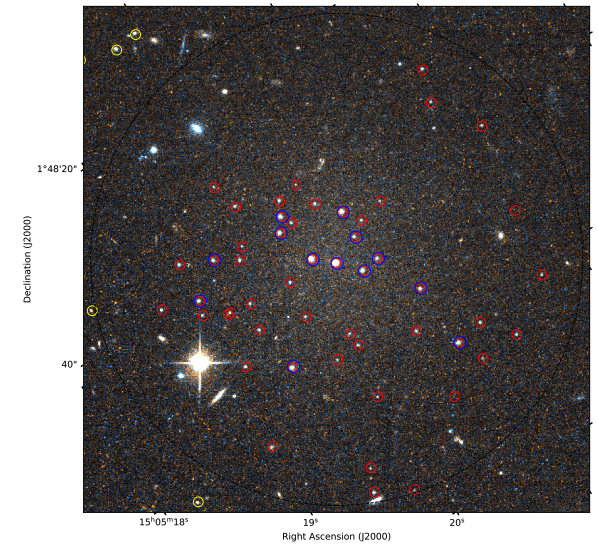
Ultra-diffuse galaxies (UDGs) are very low-surface brightness galaxies with large effective radii. Spectroscopic measurements of a few UDGs have revealed a low dark matter content, based on the internal motion of stars or globular clusters (GCs). This is in contrast to the large number of GCs found for these systems, from which it would be expected to correspond to a large dark matter halo mass. Here we present Hubble Space Telescope Advanced Camera Survey observations for the UDG MATLAS-2019 in the NGC5846 group of galaxies.
Continue reading “Dwarf galaxies in the MATLAS survey: Hubble Space Telescope observations of the globular cluster system in the ultra-diffuse galaxy MATLAS-2019”Flattened structures of dwarf satellites around massive host galaxies in the MATLAS low-to-medium density fields
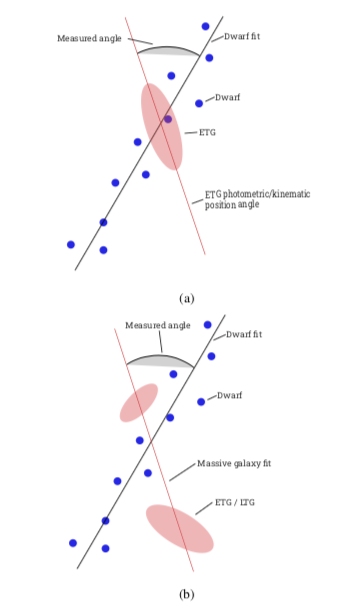
It was first observed in the 1970s that the dwarf galaxies surrounding our Milky Way, so-called satellites, appear to be arranged in a thin, vast plane. Similar discoveries have been made around additional galaxies in the local Universe such as Andromeda, Centaurus A, and potentially M83. In the specific cases with available kinematic data, the dwarf satellites also appear to preferentially co-orbit their massive host galaxy. Planes of satellites are rare in the lambda cold dark matter (ΛΛCDM) paradigm, although they may be a natural consequence of projection effects. Such a phase-space correlation, however, remains difficult to explain. In this work we analyzed the 2D spatial distribution of 2210 dwarf galaxies around early-type galaxies (ETGs) in the low-to-medium density fields of the “Mass Assembly of early-Type GaLAxies with their fine Structures” (MATLAS) survey.
Continue reading “Flattened structures of dwarf satellites around massive host galaxies in the MATLAS low-to-medium density fields”Structure and morphology of the MATLAS dwarf galaxies and their central nuclei
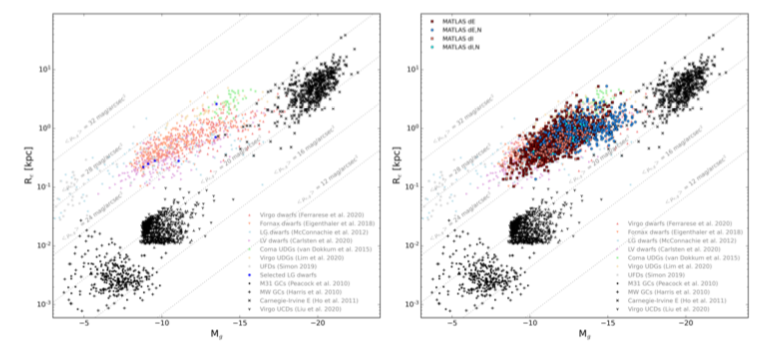
We present a photometric study of the dwarf galaxy population in the low to moderate density environments of the MATLAS deep imaging survey. The sample consists of 2210 dwarfs, including 508 nucleated. We define a nucleus as a compact source that is close to the galaxy photocenter (within 0.5 ReRe) which is also the brightest such source within the galaxy’s effective radius. The morphological analysis is performed using a two-dimensional surface brightness profile modeling on the g-band images of both the galaxies and nuclei.
Continue reading “Structure and morphology of the MATLAS dwarf galaxies and their central nuclei”Protected: Associated paper: Learnable Gabor modulated complex-valued networks for orientation robustness
Ubiquitous signs of interactions in early-type galaxies with prolate rotation
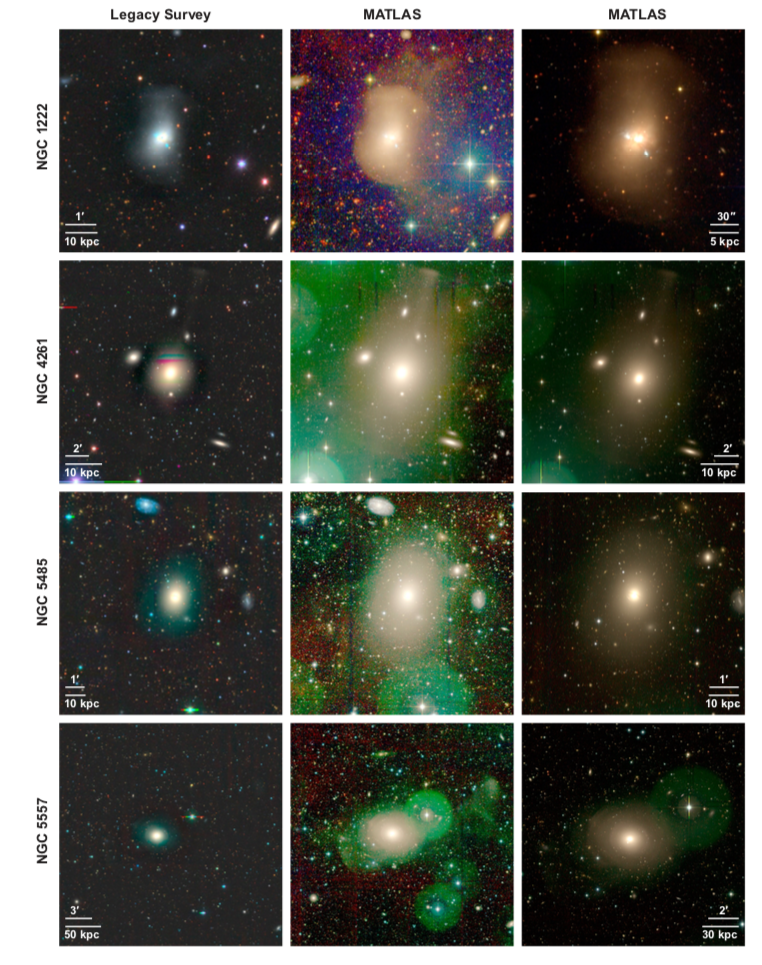
Context. A small fraction of early-type galaxies (ETGs) show prolate rotation, i.e. they rotate around their long photometric axis. In simulations, certain configurations of galaxy mergers are known to produce this type of rotation.
Aims. We investigate the association of prolate rotation and signs of (past) galaxy interactions among the observed galaxies.
Associated paper: Learnable Gabor modulated complex-valued networks for orientation robustness

Robustness to transformation is desirable in many computer vision tasks, given that input data often exhibits pose variance within classes. While translation invariance and equivariance is a documented phenomenon of CNNs, sensitivity to other transformations is typically encouraged through data augmentation. We investigate the modulation of complex valued convolutional weights with learned Gabor filters to enable orientation robustness. With Gabor modulation, the designed network is able to generate orientation dependent features free of interpolation with a single set of rotation-governing parameters. Moreover, by learning rotation parameters alongside traditional convolutional weights, the representation space is not constrained and may adapt to the exact input transformation. We present Learnable Convolutional Gabor Networks (LCGNs), that are parameter-efficient and offer increased model complexity while keeping backpropagation simple. We demonstrate that learned Gabor modulation utilising an end-to-end complex architecture enables rotation invariance and equivariance on MNIST and a new dataset of simulated images of galactic cirri.
Richards et al., 2020, Arxiv
The MATLAS survey of faint outskirts of bright galaxies

Deep imaging, that is imaging capable of capturing very low surface brightness extended objects, is a quickly growing field of extragalactic astronomy. Not only can new types of faint objects be discovered, but deep images of bright galaxies are very valuable, too, since they reveal faint signs of past galaxy collisions, the tidal features. Such “archeological” record can be exploited for investigating how galaxies formed. In the MATLAS survey, we obtained extremely deep images of 177 nearby massive elliptical and lenticular galaxies using the 3.5m Canada-France-Hawaii Telescope.
Continue reading “The MATLAS survey of faint outskirts of bright galaxies”Census and classification of low-surface-brightness structures in nearby early-type galaxies from the MATLAS survey

Accounting for the morphology is an essential constraint for the theory of galaxy formation. The low-surface brightness regions of galaxies host multiple morphological features that any realistic model should consider; however they are still not fully explored because of observational difficulties. Here we present the results of our visual inspections of very deep images of a complete large volume-limited sample of 177 nearby massive early-type galaxies (ETGs) from the MATLAS survey.
Continue reading “Census and classification of low-surface-brightness structures in nearby early-type galaxies from the MATLAS survey”